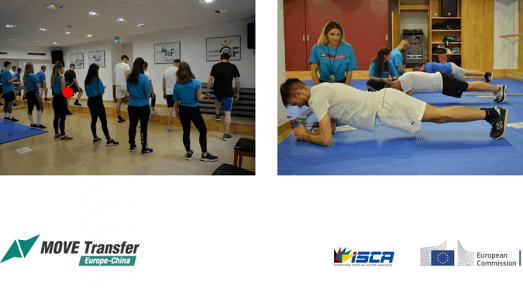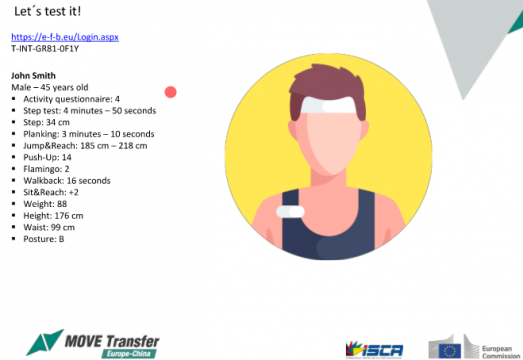European Fitness Badge expansion to different countries continues with Europe-China partnership
11/09/2020By Hilal Erkoca, ISCA

The European Fitness Badge (EFB) MOVE Transfer Europe-China webinar was held online with approximately 30 people from Europe, China, Hong Kong and Macau joining in remotely on 4 September. The aim was to equip the participants with the guidance and resources they need to conduct their own European Fitness Badge tests.
The MOVE Transfer Europe-China project started in 2019 and has so far served as a bridge between partners in Europe and institutions in China, Hong Kong and Macau. As lockdowns forced the project’s partners to continue their collaborations online this year, 21 online meetings on different topics have been held since February. The EFB webinar was a result of the regular meetings of the MOVE Transfer Europe-China project’s working group dedicated to physical activity for seniors, the Active Ageing Group, with the aim of making their partnerships sustainable and expanding the scale of the project.
The webinar’s leader, German Gymnastics Federation (DTB) shared the objective, the history and the implementation of the EFB. In addition, 2 presenters (Sports Union of Slovenia and SOKOL from Czech Republic) shared good examples of EFB tests conducted in Slovenia and the Czech Republic.
What is the European Fitness Badge (EFB)?
In the first part of the webinar, general information on the EFB tests, the different EFB fitness levels, follow-up counselling and implementation of EFB in different settings were presented. Funded by the Erasmus+ Programme and started in 2015 with 7 partners in an international consortium, the EFB is an individual assessment of a person’s fitness level composed by 3 levels (basic, advanced, and approved). It is an effective instrument that motivates and supports people in attaining a healthier and more active lifestyle.
Maria-Lourdes Gonzales from German Gymnastics Federation explained the differences between the test levels, the principles and the steps of counselling. She indicated that the counselling part was one of the most critical aspects of the test. The main goals and principles of counselling are also listed as a brief and clear consultancy, focusing on the interests and strengths of the person, using open questions, not giving orders but providing support, encouragement and good recommendations.
What are the steps of a good implementation of EFB?
The EFB can be executed in different settings as big events, small events, events in a fitness club and events in a workplace. However, requirements for events in different categories may also be different. For example, organising an EFB event in a sports club requires the participant and the trainer to know the test items and their abilities very well. Therefore, the EFB implementation can also be organised as “open doors” days for citizens and curious people who would like to try new activities. All educational and promotional materials are provided through the website of the EFB.
In the second part of the webinar, German Gymnastics Federation introduced the Online Data Platform which is a tool for the computer-based evaluation of the EFB. After the introductions, the participants had the chance to create a sample profile online and experience their fitness level in the test area of the platform.

In the last part of the webinar, Sports Union of Slovenia and SOKOL from the Czech Republic shared their experience with organising the EFB events in their countries that could be beneficial for other organisers in this process.
This webinar, as an initiative of the MOVE Transfer Europe -China Active Aging group, has been a good first step and a prelude to the expansion and good implementation of the EFB to other countries.
Learn how to organise and conduct European Fitness Badge tests with our free course




